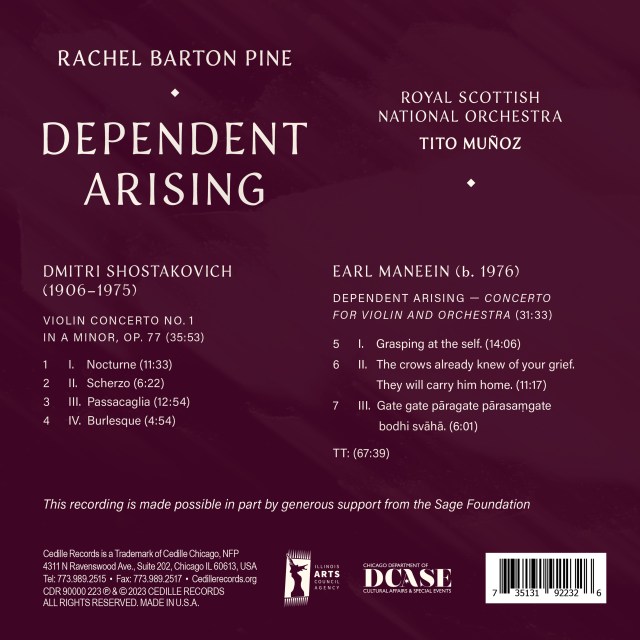
Rachel Barton Pine (1974- ) appears to have an incredibly wide range of musical interests and has managed to successfully integrate those into her musical career. Ranging from early, frequently little known, baroque composers to an expanded appreciation of grand romantic works, an intelligent selection of post 1900 composers (many little known) and some remarkable works commissioned by and for her, and heavy metal rock. And the single thread that seems to characterize, in this listener’s ear, her strength is the ability to choose music of substance and to then create insightful performances of those works.

Here she explores the sonic geography of angst and redemption in these two violin concertos written some . And this album embodies some of the qualities that make this violinist one that stands out distinctly in the crowd but in a way that is about identity rather than hierarchy. Her wide ranging musical interests are a part of her sonic autobiography. Here she reveals her interest and engagement with “heavy metal” music, a rock genre that began around 1970. In her liner notes she discusses this and manages to convincingly demonstrate a sort of “proto-metal” aspect in the first selection, the Shostakovich (1906-1975) First Violin Concerto of 1947-8 , a work notorious for its censure (the second of several such denunciations of the composer’s career) under the Zhdanov Doctrine. It was not premiered until 1955.
This somber masterpiece was written in the shadow of the horrors of the Second World War (ended only about three years before he completed this work) and reflects the composer’s deeply felt emotional memories. It was not remotely in compliance with the strictures enforced by the oppressive regime. tThey didn’t want to be reminded, much less honor, the atrocities and horrors of the war. Its premiere in 1955 (some two years after Josef Stalin’s death) by its dedicatee, the great David Oistrakh, saw the concerto earn a place in the respected repertoire of violin concertos. The four movement work is not what you want at a party unless you’re trying create a funereal vibe but it is quite beautiful in a modernist tinged, grand romantic idiom with all the hallmarks of the composer’s wry humor and his profound empathy.

The second selection, written some 80 years after the Shostakovich concerto, is a commission from a self described, “heavy metal” violinist named Earl Maneein. His is a name new to these ears but one clearly steeped with expertise in classical composition and heavy metal music both inflected with his spiritual practice of Buddhism.
Here is music from a composer who truly understands classical composition and his integration of “metal” elements is an expansion of classical composition, not a parody or an amateurish effort. This is a major concerto which gives the soloist an opportunity to show their technical and interpretive skills. I don’t know this musician and I’m not quite sure of the meaning of “metal music” as practiced now but I am positively enthralled by this work.
So we have another typical Rachel Barton Pine album, a fine reading of a classic (the Shostakovich one a bit under appreciated still) and a new work which strives to become a part of that repertoire and is likely to get their. Rachel’s virtuosity and interpretive skills are clearly evident as always and he journeys are effectively rethinking the canon of works for violin. Brava!